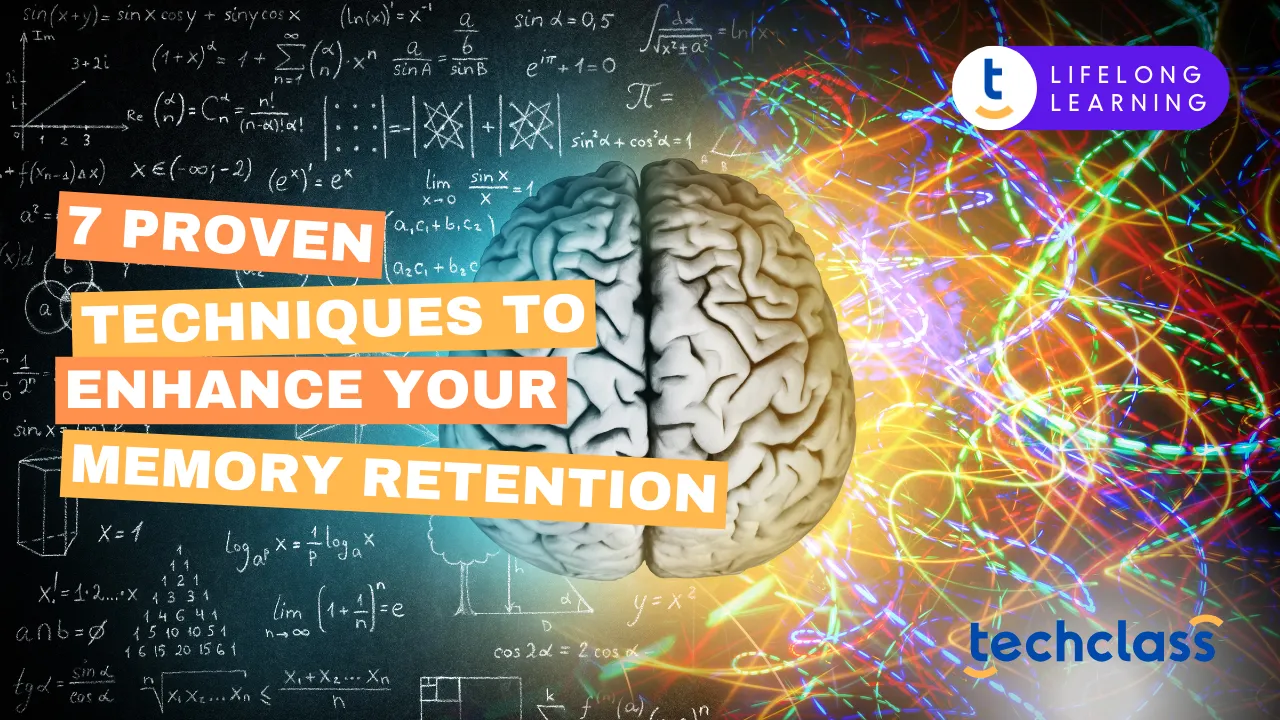
Our memories are an integral part of our identity and play a fundamental role in our daily lives, helping us navigate the world and react appropriately.
When we receive information, it undergoes three stages of memory processing: encoding, storage, and retrieval. During encoding, the information is transformed into a construct that is stored in the brain. Subsequently, it is stored as either long-term or short-term memory. Finally, the information is available for retrieval from storage.
There are several methods for facilitating this process, protecting against memory decline, and improving our capacity to retain information. In this blog post we will discuss these methods. Let’s begin.
Memory strength is a lot like building muscle. The more you exercise it, the stronger it becomes. However, you can't expect to get stronger by lifting the same weights every day. Your brain needs new challenges to stay sharp and enhance its memory retention. One of the best ways to boost your brain’s memory capacity is by learning a new skill.
There are countless activities to choose from, but the key is to find something that pushes you out of your comfort zone and demands your full attention.
Here are a few examples:
Start by outlining the information you need to recall. Creating a detailed but organized outline helps highlight and focus on important concepts. This initial step ensures you have a clear framework to guide your learning sessions.
A highly effective organization strategy is the chunking method. This technique breaks down large amounts of information into smaller, logical units that are easier to understand and remember.
Chunking allows your brain to process and retain information more efficiently, making it a valuable tool for memorization.
Creating associations by linking new information to existing knowledge can significantly aid in memorization. Forming mental images and connecting new information with sounds, smells, and tastes helps encode memories more effectively.
For instance, if you need to remember someone named Mr. Baker, imagine him wearing a chef's hat, surrounded by the aroma of freshly baked bread.
The Baker/baker paradox illustrates this concept well. If two individuals need to remember someone’s last name is Baker, they are more likely to recall it if they visualize the person as a professional baker (Mr. Baker with a chef's hat). This storytelling technique makes the information more memorable.
Using visual tools such as mind maps, infographics, sketches, and images can significantly enhance learning. Visual aids like charts and diagrams break down complex information, making it simpler to understand and remember.
This method is particularly effective for visual learners, people who grasp concepts more readily through visual representation. It's also an excellent strategy for presenters, who can incorporate visuals into their slides to serve as retrieval cues.
Beyond aiding in information retention, visual cues are also powerful for enhancing spatial memory. For example, when trying to remember a series of events, you could create a timeline with images representing key moments.
Creating mnemonics, such as acronyms, acrostics, and rhymes, is a fantastic way to memorize information for the long term. For example, if you need to remember the order of the planets, you might use the acronym "My Very Educated Mother Just Served Us Noodles" (Mercury, Venus, Earth, Mars, Jupiter, Saturn, Uranus, Neptune). Or, to remember the colors of the rainbow, the rhyme "Richard Of York Gave Battle In Vain" helps recall Red, Orange, Yellow, Green, Blue, Indigo, and Violet.
For those who are more visual learners, another effective mnemonic device is building a memory palace. A memory palace is an imaginary place, like your childhood home or a favorite park, where you can store mnemonic images. The idea is to take a mental journey through this familiar space to recall the information you need. For example, to remember a grocery list, you might imagine placing each item in different rooms of your house. Contestants in the World Memory Championship often use a combination of memory palaces and storytelling to enhance their recall abilities.
By using these mnemonic techniques, you can transform abstract information into vivid, memorable images and phrases, making it much easier to retain and retrieve the information when needed.
Sometimes, the old-fashioned methods are the best. Handwriting your notes can greatly enhance your learning experience. When you write by hand, you naturally have to be selective and focus on the key points, which helps reinforce the most important information.
Consider making your notes more effective by using different colors for different topics or creating doodles that represent key concepts. For example, if you're studying biology, you might draw a simple cell diagram to remember its parts. Or, if you're learning a new language, writing down new vocabulary in colorful, bold letters can help make the words stick.
Additionally, summarizing information in your own words rather than copying it verbatim helps deepen your understanding. For instance, instead of writing down a full paragraph from a textbook, jot down a few bullet points that capture the essence of the information. This way, you engage more actively with the material, making it easier to recall later.
Engaging in active recall is a powerful technique for enhancing memory retention. Testing yourself forces you to pull information from your memory, strengthening your ability to recall it later. Flashcards are an excellent tool for self-testing, allowing you to quiz yourself on key concepts and facts.
Instead of simply rereading your notes or textbooks, try using flashcards to test your knowledge. For example, if you're studying a new language, write vocabulary words on one side of the card and their translations on the other. Periodically test yourself, and you'll find that this method helps you remember the words more effectively.
Active recall goes beyond just flashcards. You can also try teaching the material to someone else, or even just explaining it out loud to yourself. This forces you to retrieve the information and articulate it clearly, which reinforces your understanding and memory. The significant extra effort involved in these practices makes them highly effective for committing information to memory.
Our memory is a skill, and like any other skill, it can be improved with practice and healthy habits. You can start small and gradually build up. For example, choose a new, challenging activity to learn, such as playing a musical instrument or solving puzzles. Incorporate a few minutes of exercise into your daily routine, as physical activity has been shown to boost cognitive function.
Maintaining a consistent sleep schedule is crucial, as quality sleep is essential for memory consolidation. Additionally, make some dietary adjustments by including more green vegetables, fish, and nuts in your meals. These foods are rich in nutrients that support brain health. By integrating these simple habits into your lifestyle, you can enhance your memory and overall cognitive abilities.


